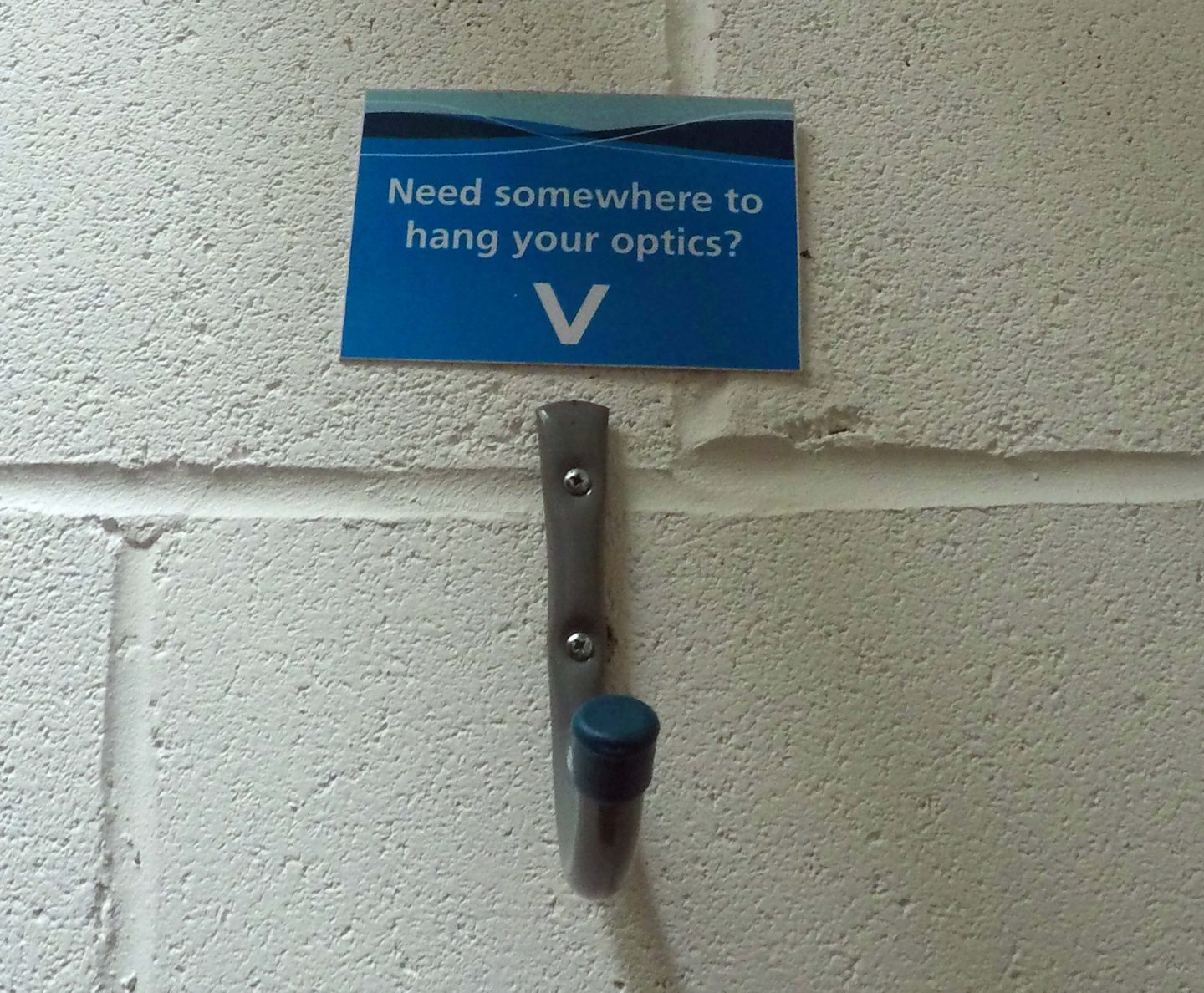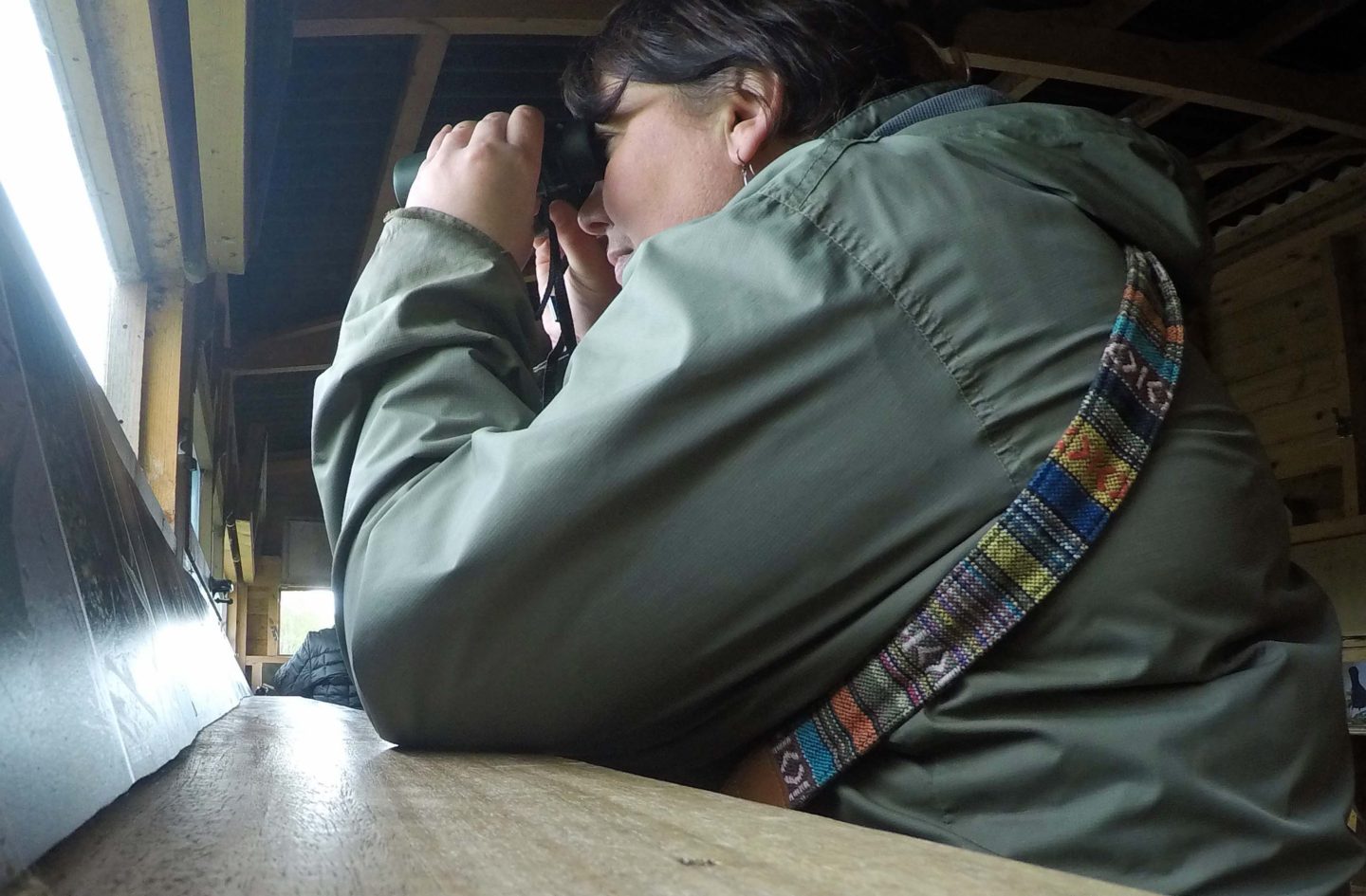 Tophill Low has gone through a vast change in the last few years. I remember taking my life into my own hands climbing up steps into bird hides that, quite frankly, would have sent a Health & Safety officer into a frenzy. Once in there, one false move and well, you’d be sitting amongst the reed beds with the water voles. But, what a transformation….gone are the old rickety bird hides and muddy paths and in are comfortable, sturdy hides, cleared and well-maintained paths and ponds. An impressive amount of work has been done. So, whether you remember it from old or have never heard of it, here are seven reasons why you should visit Tophill Low right now.
Tophill Low has gone through a vast change in the last few years. I remember taking my life into my own hands climbing up steps into bird hides that, quite frankly, would have sent a Health & Safety officer into a frenzy. Once in there, one false move and well, you’d be sitting amongst the reed beds with the water voles. But, what a transformation….gone are the old rickety bird hides and muddy paths and in are comfortable, sturdy hides, cleared and well-maintained paths and ponds. An impressive amount of work has been done. So, whether you remember it from old or have never heard of it, here are seven reasons why you should visit Tophill Low right now.
Location & Site
Situated south of Driffield in East Yorkshire, Tophill Low is a nature reserve born out of the Yorkshire Water Treatment Works alongside the banks of the River Hull. I would say that the site is split into two parts. Simply put….North of the car park, where there is plenty of parking and South of it. A large reservoir shaped like the letter ‘D’ and imaginativly called ‘D Reservoir’ dominates the north area. Areas of woodland, small ponds, scrub and marshland with wooden hides hug the curved part of the ‘D’. On the south side, another large reservoir shaped like the letter ‘O’ and called (yes, you’ve guessed it) the ‘O’ Reservoir dominates with seven hides overlooking lagoons, marshes and areas of scrub and another hide looking across Watton Nature Reserve. A free, simple map is available in the car parking area and is easy to follow. As you can see, it’s also easy to crumple up in your pocket!

Reason 1: Kingfishers
Who doesn’t like a Kingfisher? With bright iridescent blue and rust-red feathers, a lethal looking beak and red legs, this spectacular bird flits across the water at some speed. My usual view of a Kingfisher is the streak of a blue backside disappearing into the distance. Not here. I have never been to Tophill Low and not seen a Kingfisher but right now, in April moving into May, they are breeding and have decided to nest below a hide situated in the furthest point of the northern area. On the approach to the hide, there are several signs reminding you to be extra quiet. This isn’t easy. Getting into the hide through a wooden door, walking across a wooden floor and settling onto a bench that moves with a groaning creak whilst still acknowledging your hide companions is a bit like eating a bag of crisps at a crucial moment, mid film, at the cinema. Oh and make sure your phone is on silent!
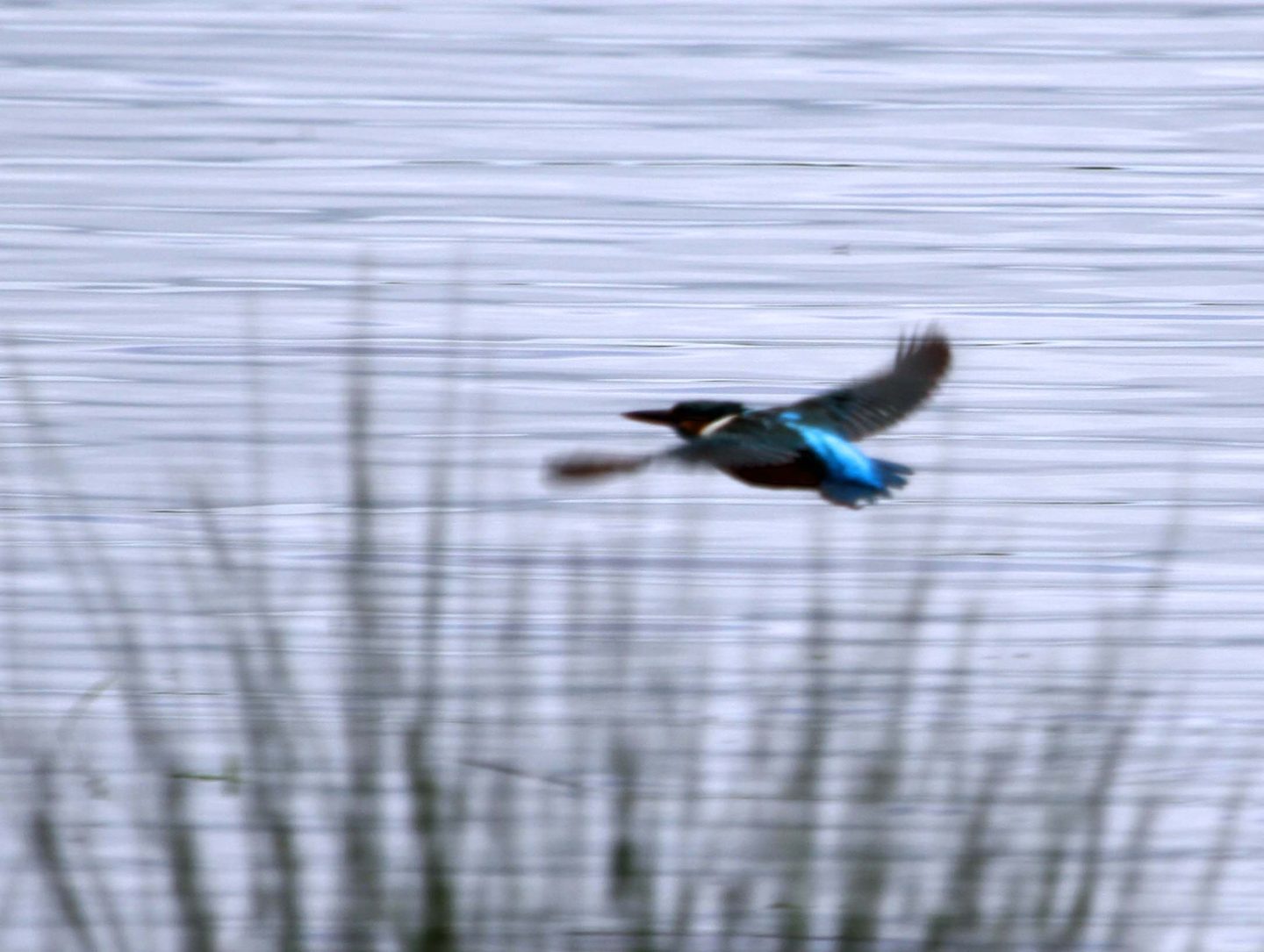
My usual view of a Kingfisher – a blurry backside streak!
On my visit, just as I plonked my backside on the bench, I saw the Kingfisher’s backside disappear into the distance. My heart sank. I’d disturbed it. But no, my hide companions seemed unaffected by my clumsiness telling me that he’d be back soon. They were right. Both male and female birds came back and forth to the nest several times often posing on a protruding stick for the birding paparazzi in the hide. The male, in particular, seemed to relish the attention. If he’d flounced a wing behind his neck and tossed his head in the direction of our cameras, I wouldn’t have been surprised.
These are the best views I have ever had of Kingfishers and they definitely deserve to be the number one reason for visiting Tophill Low right now.
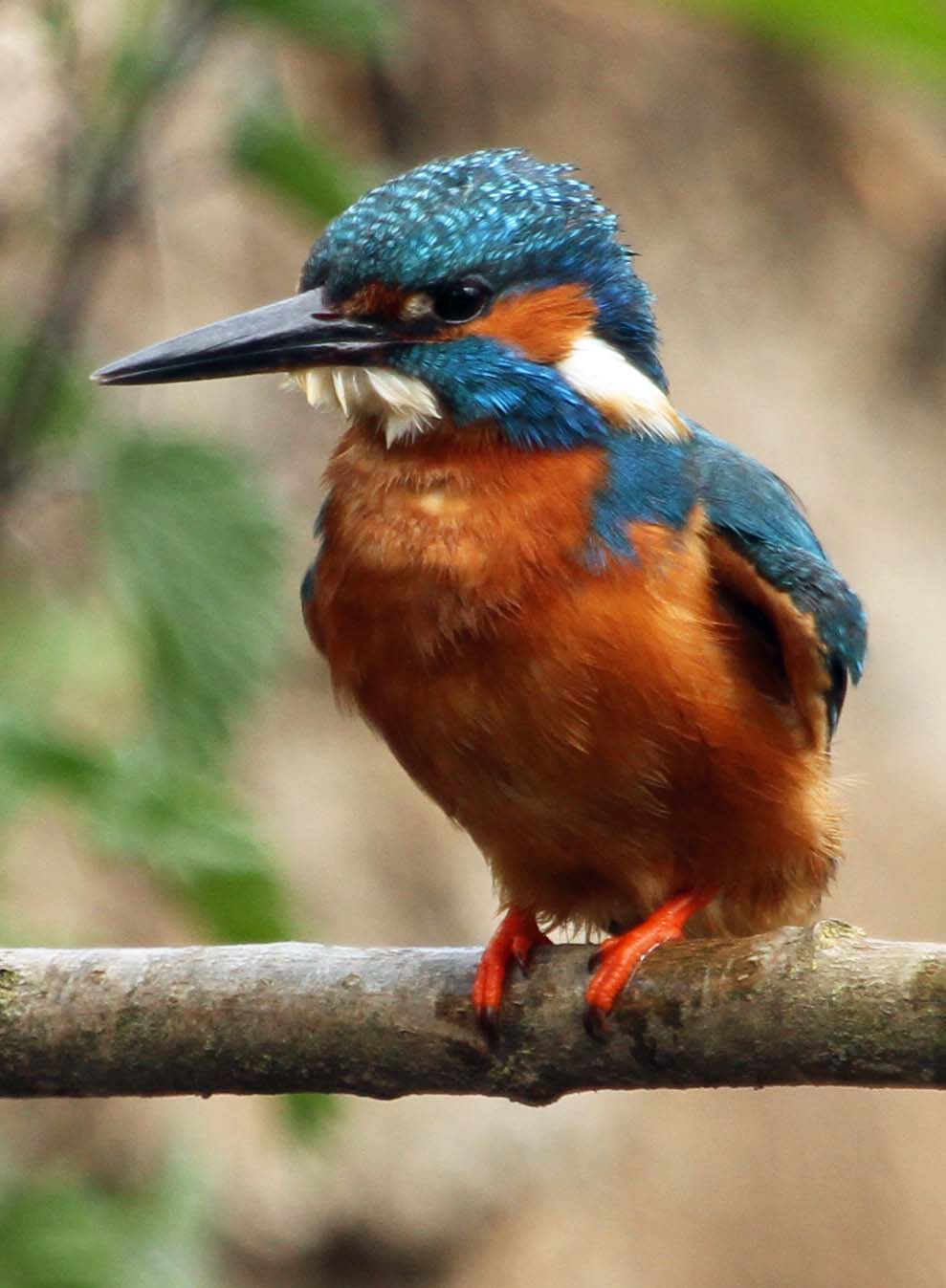
Such a handsome chap!

Fish supper
Reason 2: Wildlife Phototography
Whether you are a professional photographer producing stunning shots for sale and publication or a beginner starting out, the Kingfishers are a great start whilst at Tophill Low. My camera always turns into a hot potato when I see a bird and by the time I’ve juggled it about a bit, the bird has gone. The Kingfishers are back and forth so regularly that even I managed to cool the hot potato! But these aren’t the only birds putting on a show right now.
Start out at the bird feeders which can be seen through the windows of the new hide overlooking ‘D’ Reservoir. This will get you ‘tuned in’ to the movements and behaviour of the birds. Goldfinches and Chaffinches are frequent visitors and you should be able to get some great shots at close quarters albeit through the floor to ceiling window. This would be particularly good for young children trying wildlife photography for the first time. The hide is warmed by a log burner with drinks available (honesty box for donations) and the birds come close to the window so no freezing outside waiting for the birds to come. What luxury!
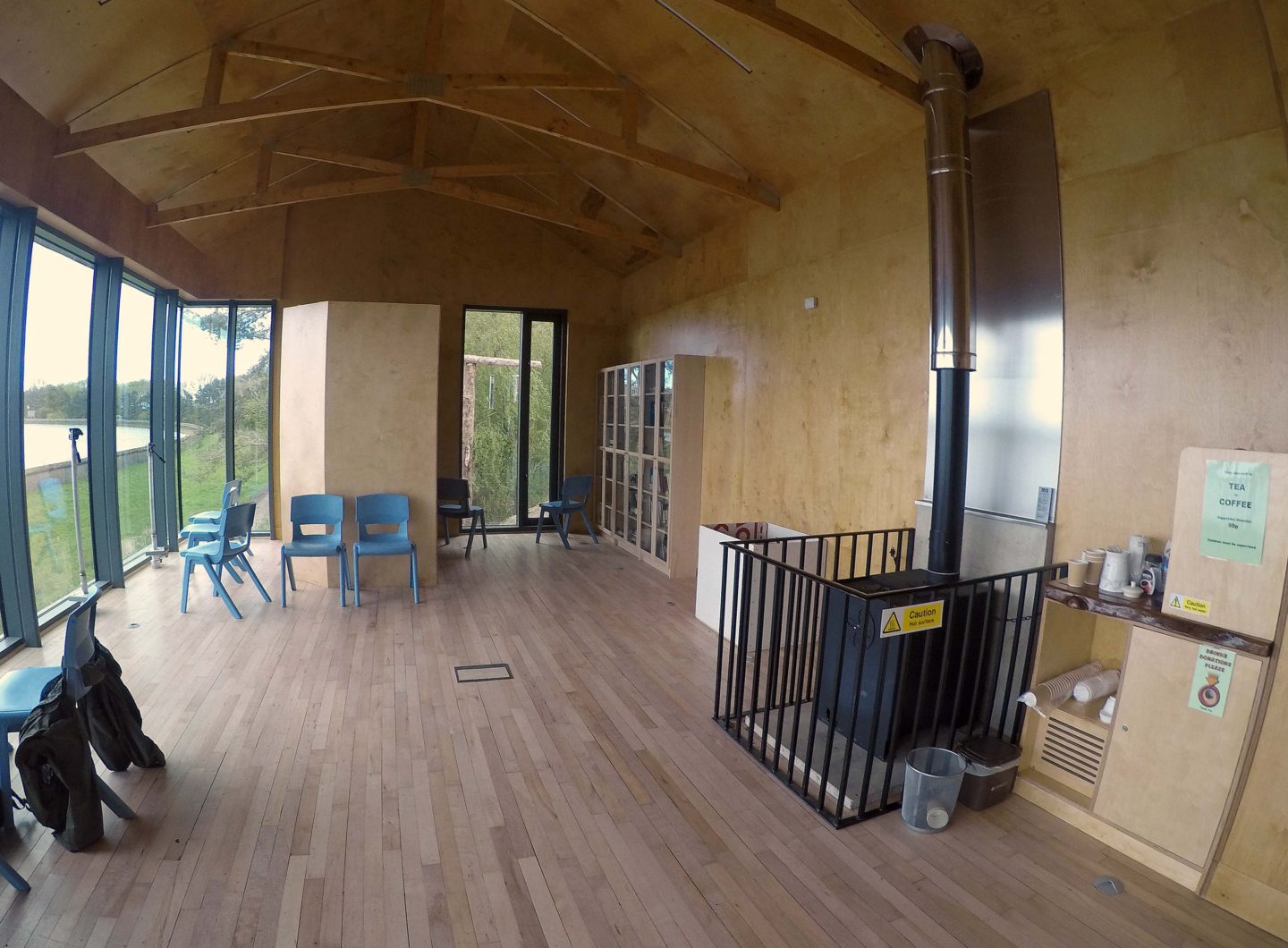
The new hide – feeders are to the far end on the right

Great Tit taken from the window in the hide
This new hide also has picture windows overlooking ‘D’ Reservoir itself. Good luck taking photos from here. Unless you have a quality, superzoom lens and tripod then any kind of duck will look teeny tiny. I tried, failed and ended up binning a lot of photos from here. There are docking stations for scopes so if you are into digiscoping then you’d probably have a better chance of getting something half decent that way. I’m just quite glad that there was nothing rare the day I visited. I’d have been very disappointed with any photo I took of the recently seen Osprey unless it flew or fished right in front of the windows!
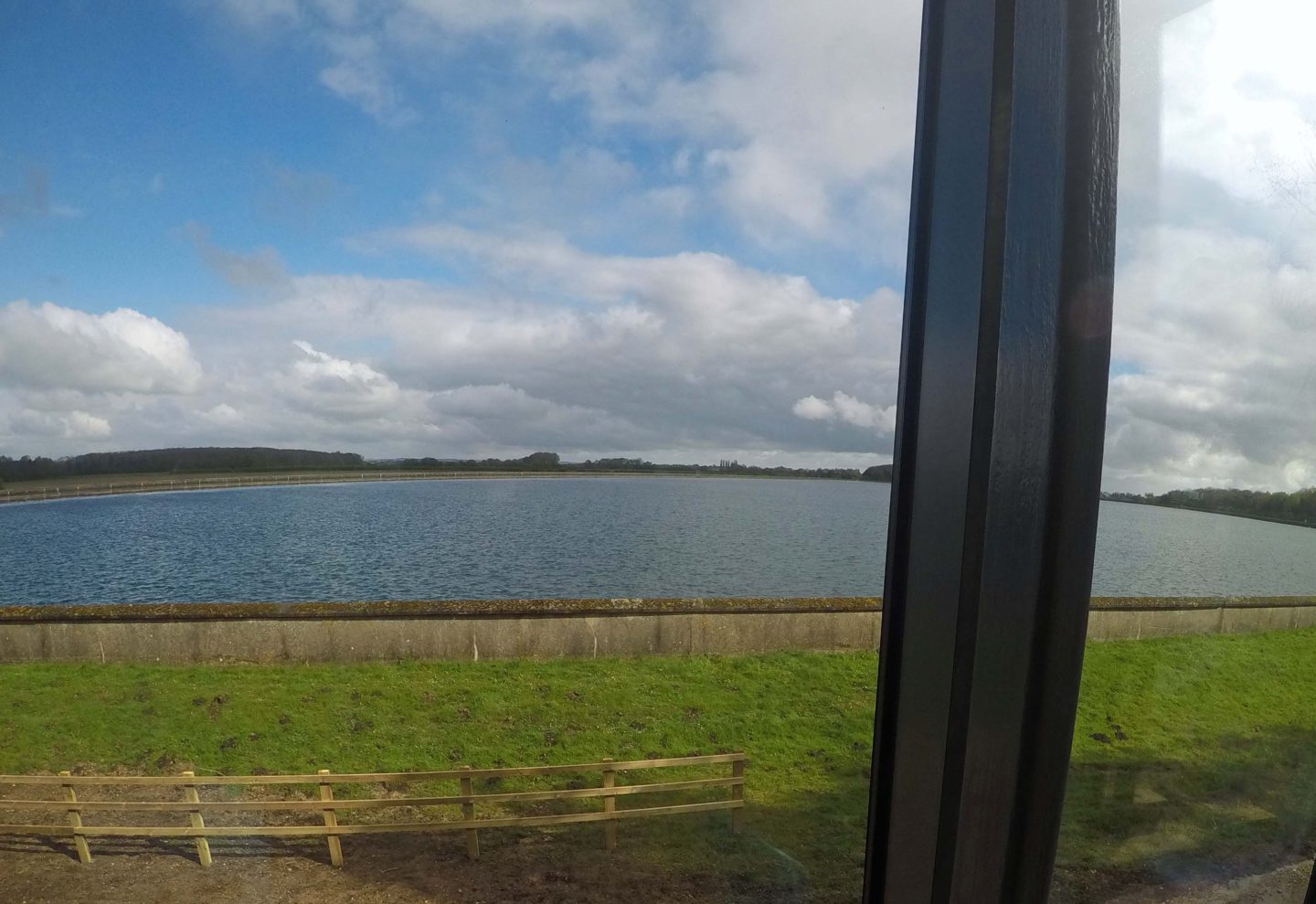
View over ‘D’ Reservoir from the new hide windows – great place to have your picnic!
Meanwhile, after a must-do visit to the Kingfishers and the new hide, the rest of the site also offers much for the photographer. The woodland areas are infuriating at the best of times but right now, the migrating birds are arriving and the trees aren’t fully leaved so you get a greater chance of seeing the little birds that secrete themselves away amongst the branches. A Chiffchaff accompanied me on my walk with his lyrical ‘chiffchaff’ song but I never saw it enough to photograph it. As for the Reed Bunting, flitting about in the willow at the edge of the wood, I just could not get him. I think I photographed every leaf and branch before I managed to get a shot. Grrrrr! Sometimes, I think it’s just better to enjoy the moment through binoculars! In a few weeks time the trees and undergrowth will make it even harder so now is a great time to practice woodland shots.
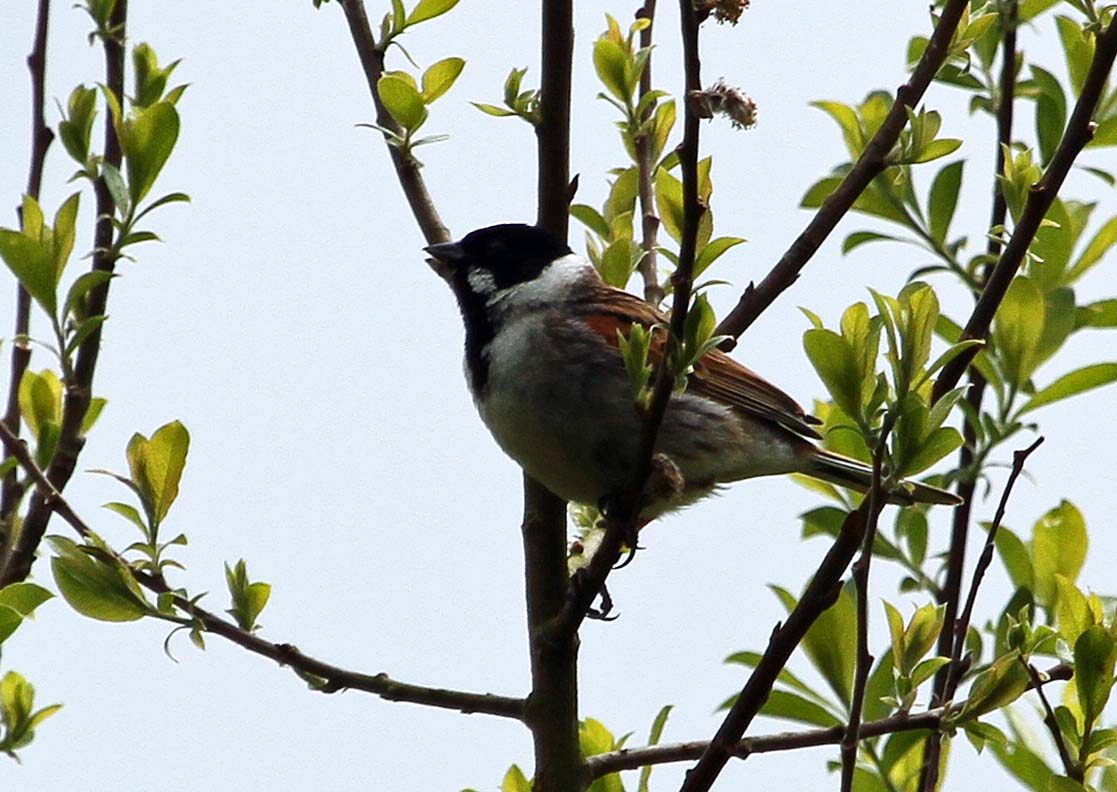
Reed Bunting playing hide & seek
The southern lagoons and marshes have, literally, got sitting ducks waiting to be photographed as well as swans, geese, waders and gulls. Whether you want to practice distance work, creative shots or birds in flight, this is the place to go. I suggest spending a good amount of time here. Choose one of the three hides around the southern marshes (each hide has a slightly different viewpoint but essentially the same birds) and stick with it. You never know what’s going to fly in but with birds mating, nesting, fighting, flying, swimming, diving, eating, sleeping…..there is a lot going on. With an ever changing light, it proves a challenge but what a delightful challenge it is.

Flying geese

Sitting ducks
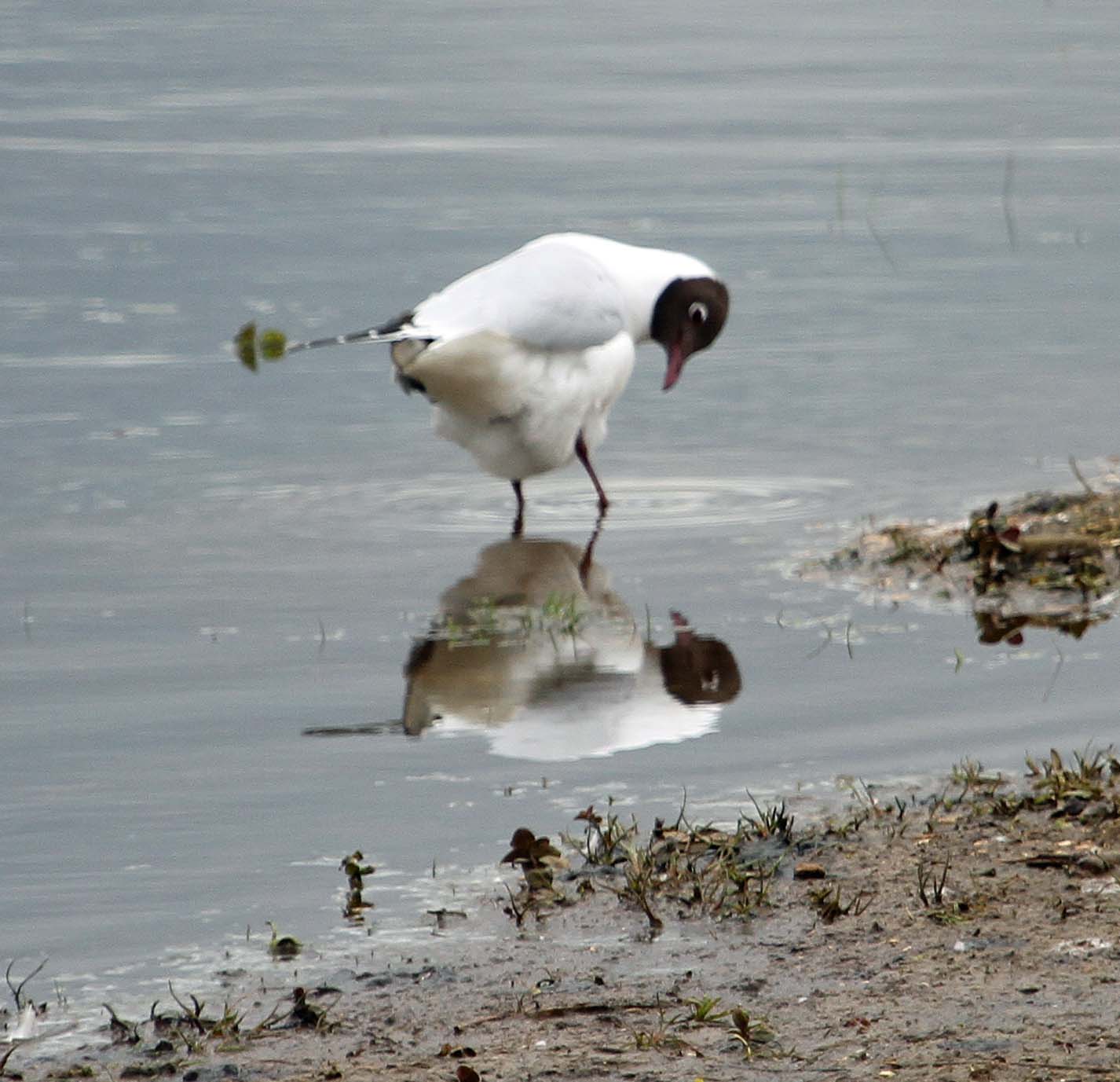
Vain Black-headed Gull: ‘Does my bum look big in this?’
For an added bit of entertainment, there is an artificial Sand Martin colony at the furthest point of the marsh. There were none when I was there (they were present on the ‘D’ reservoir’) but when they are there, try getting a photo of them flying!

Southern Marsh view with Sand martin colony on the left
Reason 3: Bird Identification
If you need to brush up on your bird identification skills, Tophill Low at this time of year is excellent as there are a lot of mixed habitat species to see in a relatively small area. From differentiating between the songs of a Willow Warbler, Wood Warbler, Blackcap and Whitethroat in the woods to really getting to grips with ducks and waders on the water, the reserve will deliver in buckets.
This clip of video is short and sweet but gives you the idea of what you’ll be looking at in the South Marsh hide. It looks like there are no birds at all but, trust me, it’s teeming! Keep the sound up and you can just hear the sound of the birds. In real life, tank up the volume tenfold and you’ll see what I mean when I say that the sound is tremendous! It’s a great hide for gulls, terns, swans, geese, waders, herons, egrets, ducks and the occasional flyovers by Marsh Harriers.
Keep to the reservoir hides if you’re looking for ducks, swallows and martins.
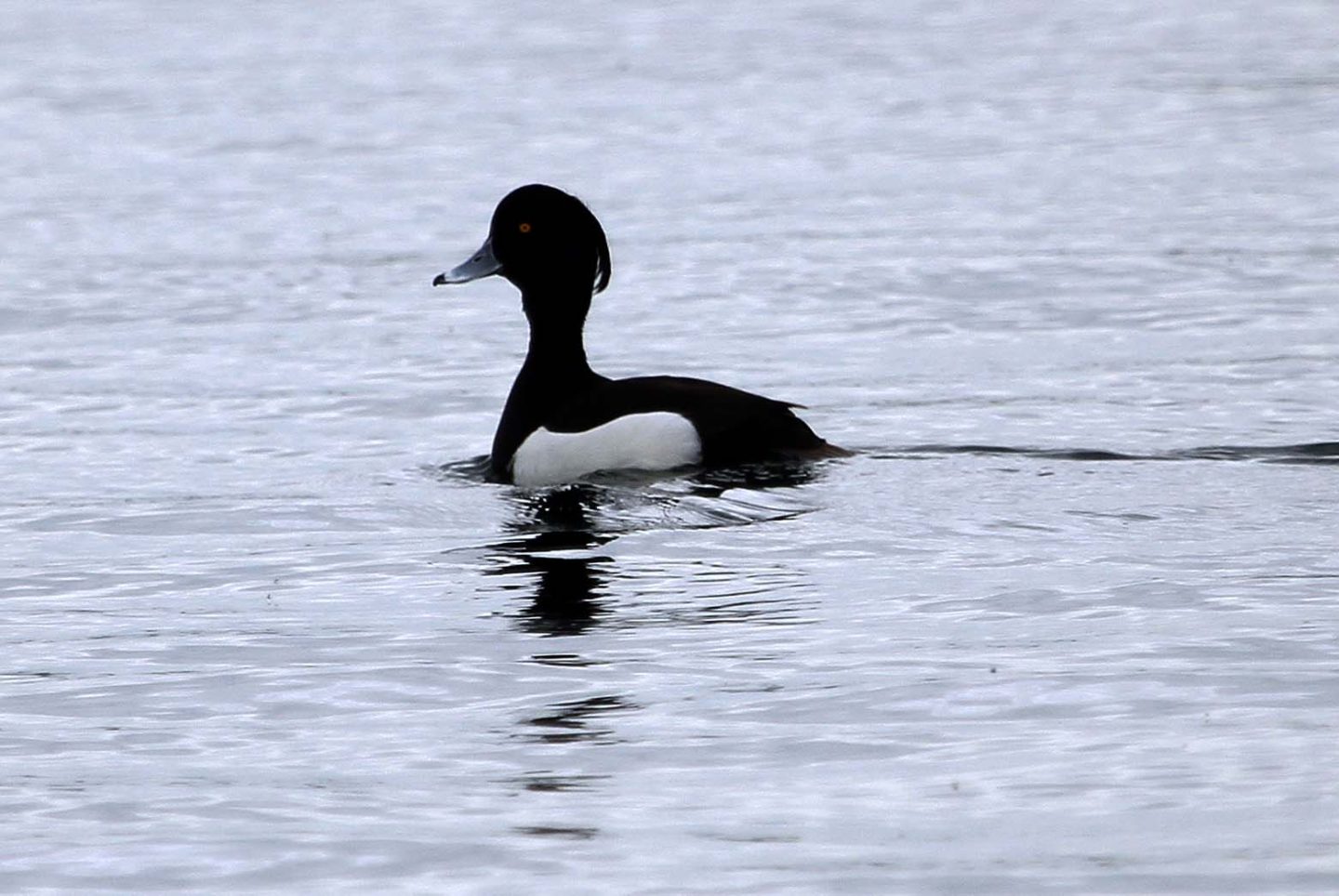
Tufted Duck

The hides have useful pictures to assist in identifying the birds
Why visit right now? It has to be the migrating birds. They are arriving back to the site to breed or passing through on their way elsewhere so now is always an exciting time. You never know what you’re going to get.
Reason 4: Bird Behaviour
Right this minute , birds are busy, very busy. Watch out for woodland birds, such as Blue Tits and Chaffinches, taking nesting material into the nest boxes nailed to the north wood trees and Kingfishers (yes, them again) bringing in fish and taking it into the nesting hole. Great Crested Grebes dive in the ‘D’ Reservoir – if you’re lucky, you’ll see their mating dance. Other birds dance too. Whilst I was there, a male Little Ringed Plover tried to attract the female by creating small hollows for the his prospective mate to check out as a nest.

She seemed to think he was doing a good job and offered herself to him by shaking her tail feathers and arching her wings. I’m not sure that he was that impressed! He looks a bit bemused!
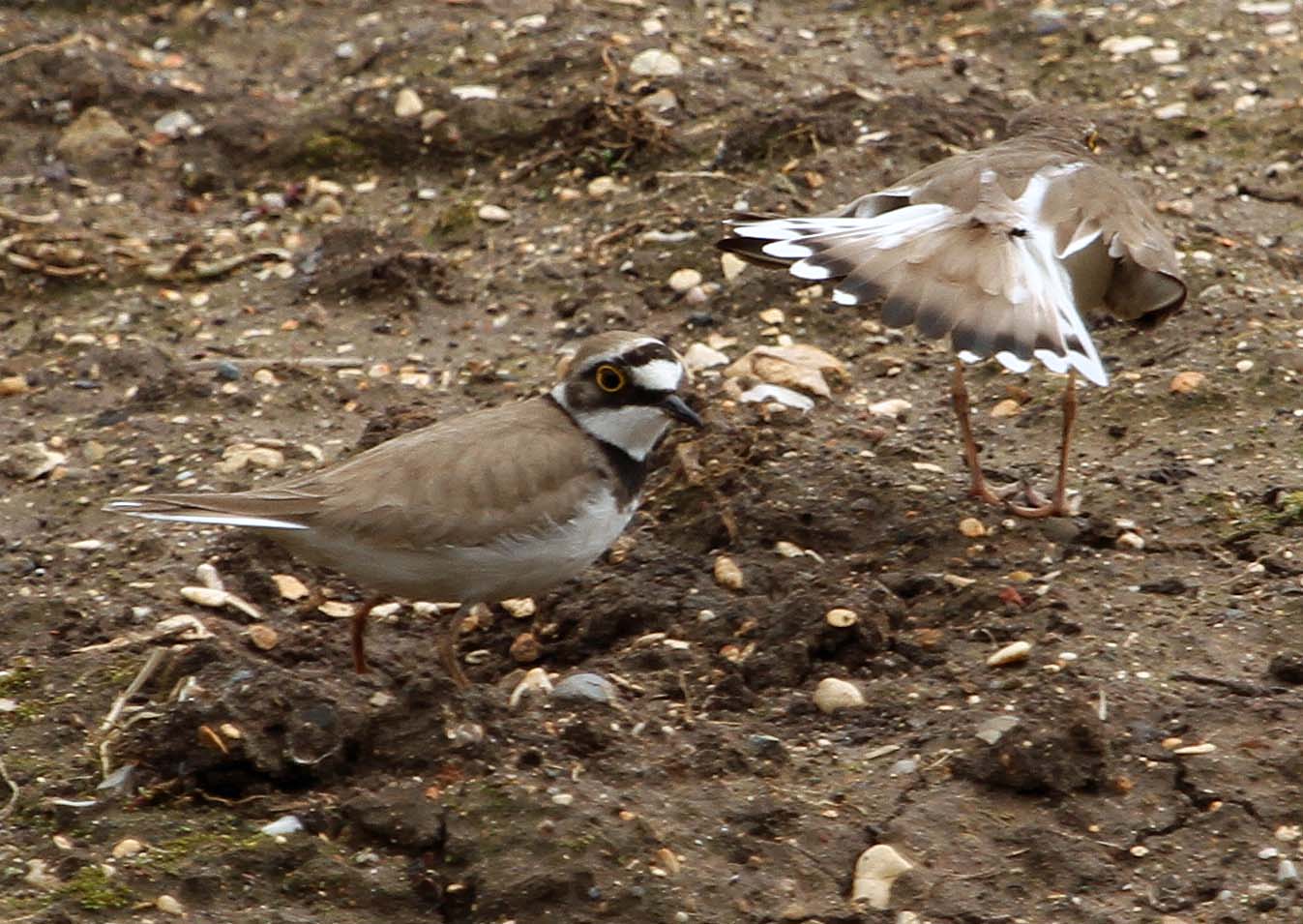
C’mon let me see you shake your tail feather!
Meanwhile some species have already had their first brood. Moorhens and Greylag Geese all had chicks. Check out the live feed screen in the new hide. A pair of Barn Owls are being filmed in the nest box. Keep your eyes peeled for them outside the nest box too.
Reason 5: It’s not just birds!
The birds may get all of the press right now but there are other things going on at Tophill Low that deserve a look-in.
This is the time for spring flowers and Tophill Low has its fair share. The site is home to Bluebells, Red Campion, Yellow Archangel, Wood Sorrel, Ransoms in the northern parts. In the southern areas, blossom on Hawthorn and Blackthorn flanks the little paths to the hides. The best swathe of Cowslips I have ever seen is on the ditch to the left of the path flanking the ‘O’ Reservoir. It’s a little on the turn by now but you cannot miss it. A mass of yellow. Beautiful. Well worth checking out now.

The flowers attract butterflies and moths so be on the look out when the sun shines (it didn’t much when I was there!). Dragonflies are starting to appear on the small ponds dotted about the site. The sun also brings out the grass snakes by the ‘O’ Reservoir. Tread carefully.
Watch for deer. I have seen them in both the north and south sides. If you are lucky, you’ll see a stoat or an otter.
Marsh frogs are very vocal at this time of year. You cannot fail to miss the noise that they make or their air sacs. They look like they are blowing bubble gum out of their ears!
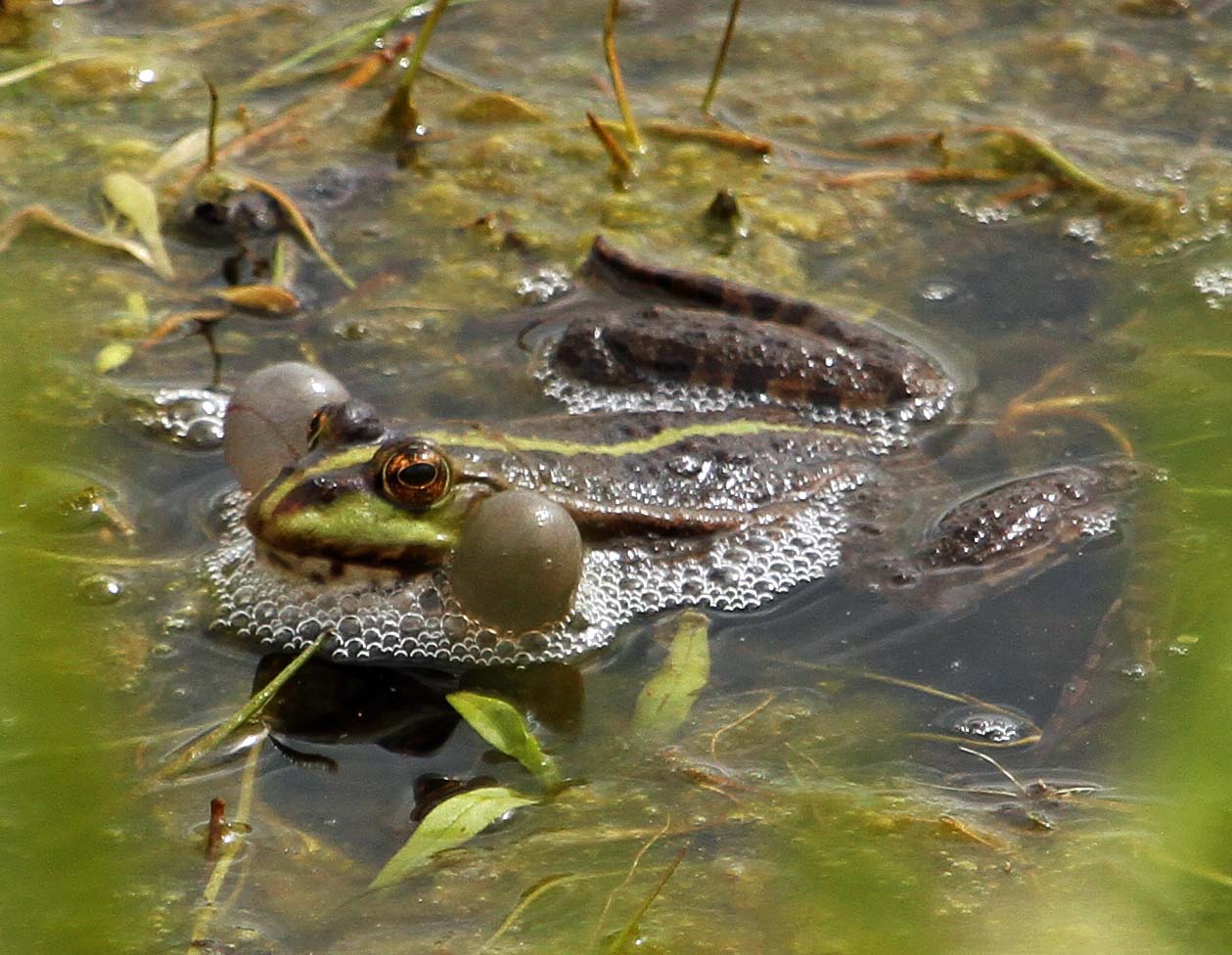
Reason 6: People
Tophill Low is a friendly place. I’ve learned a lot from birders in the hides. People have a lot of knowledge and love sharing it when they can. If in doubt, ask. If someone is in the hide when you arrive, it’s likely that they will tell you what’s about, quietly. This time, my fellow hide birders told me about the routine of the Kingfishers and that a Cetti’s Warbler was knocking about. Always useful information. Beware of bumping into birders again. Once you’ve left the hide, a rarity is sure to have landed on the window sill and done a happy little jig!
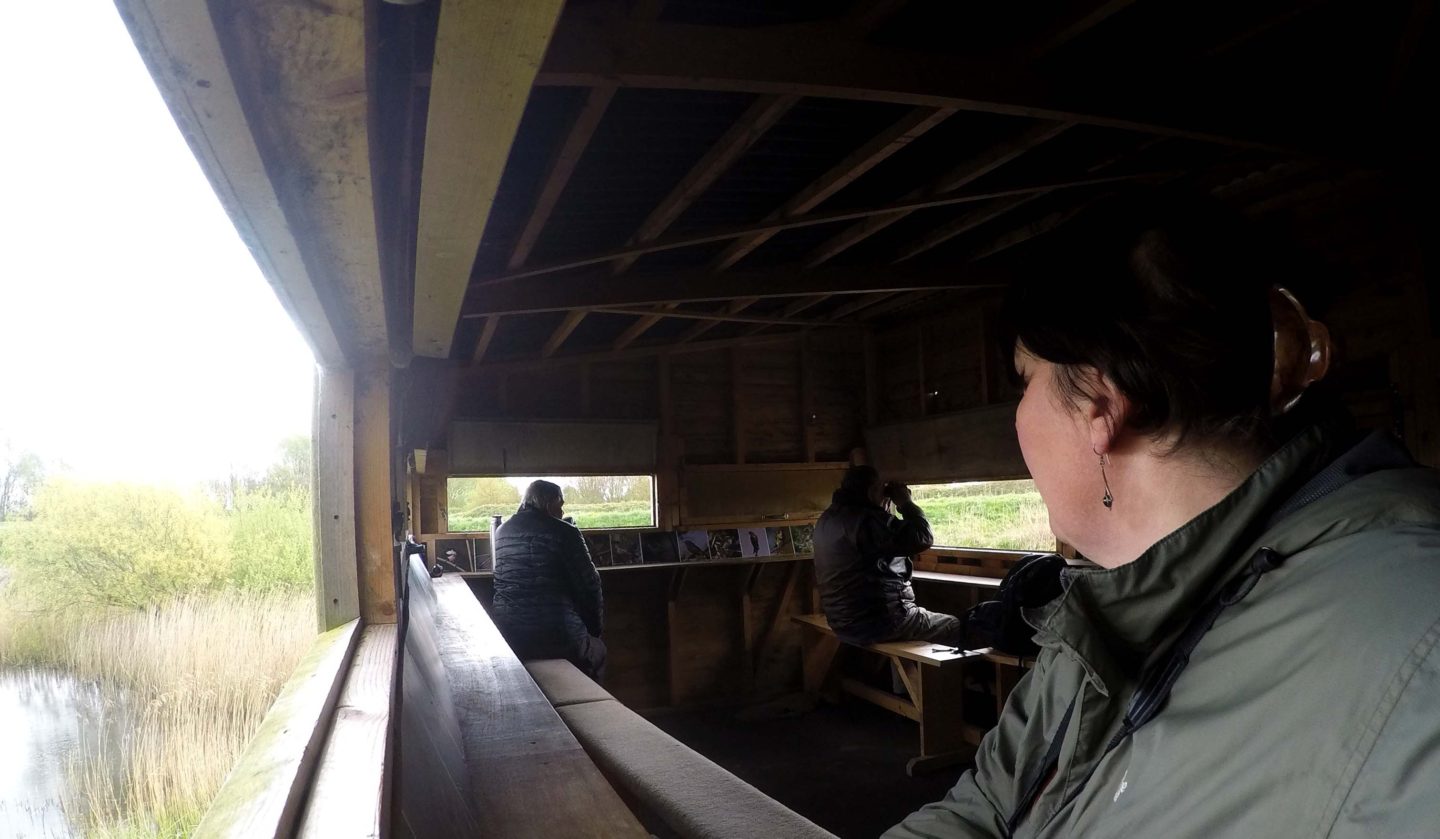
Something is always more interesting at the other end of the hide!
Other people about the site can be of interest too. I asked a gentleman in a field sweeping the grass with a net what he was looking for. It turned out that he was surveying the land for flies. It had been a poor day so far for him but the flies he showed me were interesting nevertheless.
One of the wardens is usually about and runs 2 hour guided walks on the first Saturday of every month. We bumped into a few members of staff during our day and each and every one was happy to share recent sightings, talk about the recent changes to the site and generally answer any question we had for them. They also keep the sightings board up to date which is always useful if you have a target species.
Due to the time of year, the site is busy which means that by visiting right now you can meet an array of interesting people and learn from them too.
Reason 7: Evolution
As I mentioned at the beginning, Tophill Low has gone through a fantastic change over the last few years. The new hide by the car park overlooking ‘D’ Reservoir, which is yet to be officially opened it is that new, has an education room below it and an Education officer has been employed. School children now go pond dipping in the newly created pond and use scopes to look across the reservoir.
Pond edges and footpaths have been cleared and planted where necessary. Seeing it all now, I can’t help but wonder how it will evolve. Visit Tophill Low now and see it for yourself. Then, go back in summer then next year and so on and see how it has changes over time. It’s certainly something I intend to do. What plants have appeared? Have new species of bird arrived? Has the new planting and pond attracted new species – moths, butterflies, dragonflies, insects – or increased their populations? It will be interesting to see.
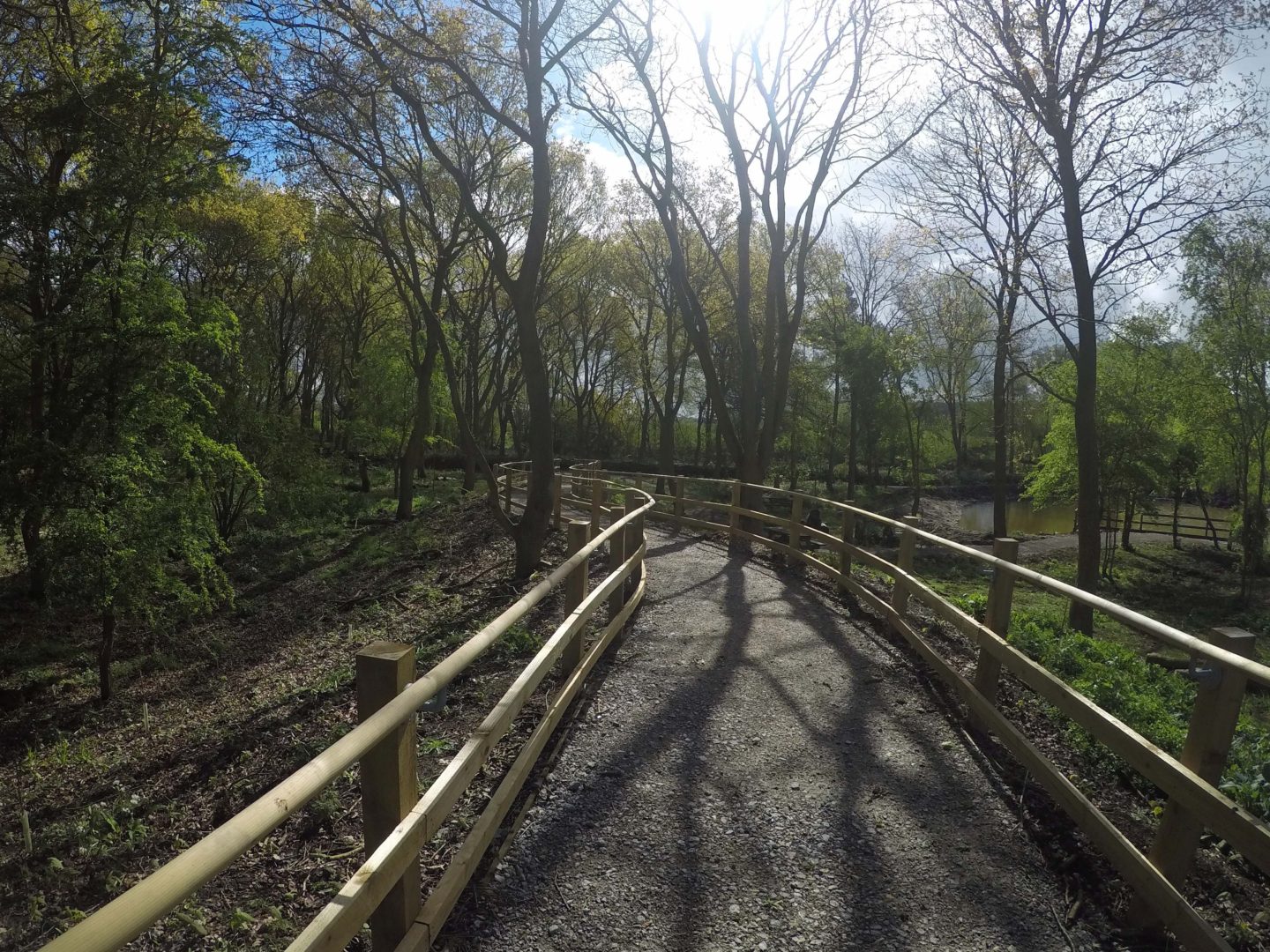
New walkway leading from the new hide down to the new pond
I have only touched the surface here. The list of species present is impressive. My favourite part of my trip? It has to be either watching these three Greylags on the Watton Nature Reserve (I couldn’t see what they were looking at but they were fascinated by something!) or the Little Ringed Plovers or, dare I mention them again?….the Kingfishers!
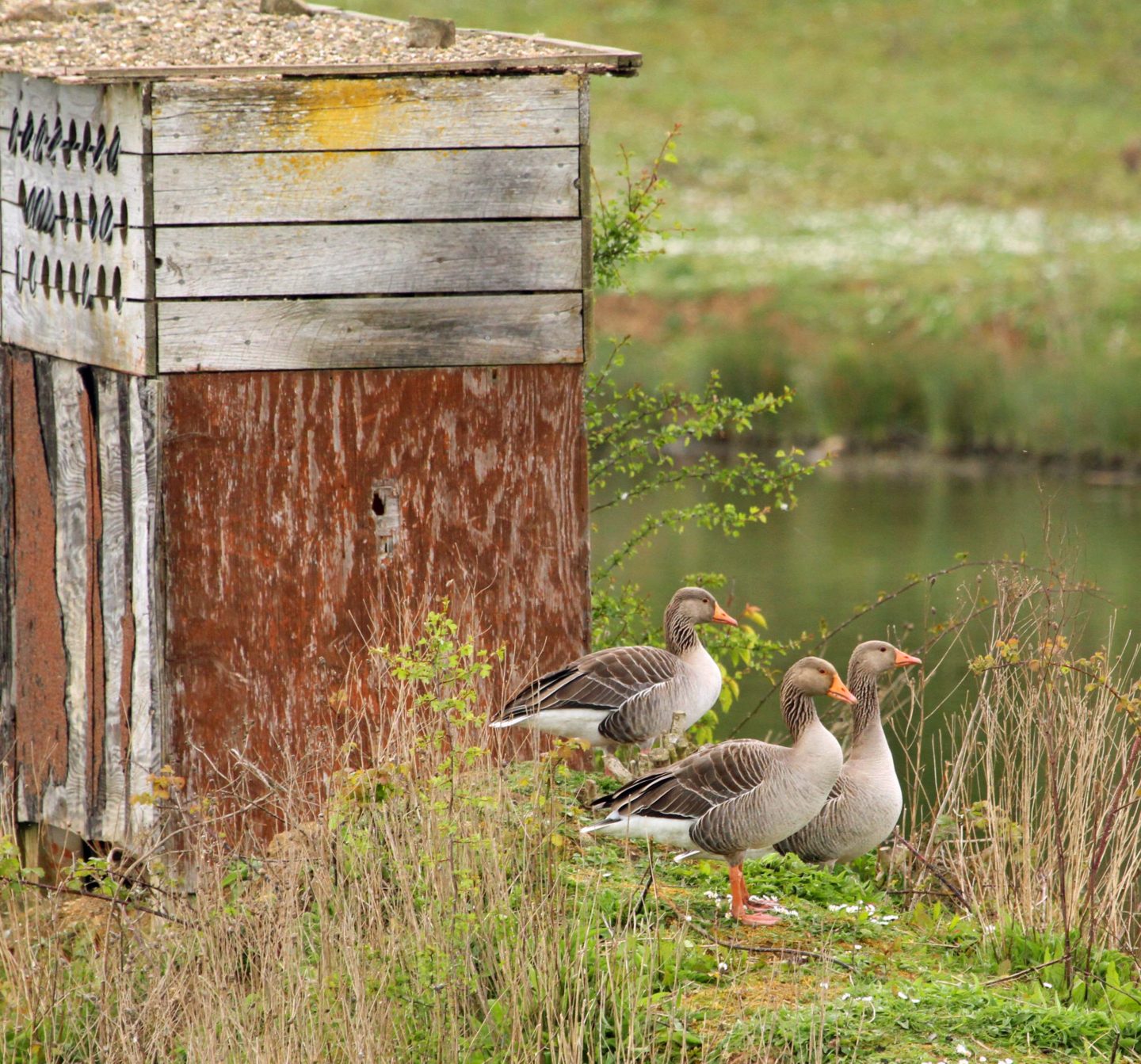
Useful Information
Tophill Low has an excellent website. It has all the usual information for getting there and planning your visit. The information regarding sightings is extensive and covers not just birds but also insects, lepidoptera, fungi and botany. I highly recommend looking at the website prior to a visit. It contains all the information you will need http://tophilllow.blogspot.co.uk/
For up to the minute sightings by staff and visitors join the Tophill Low Nature Reserve Facebook Group or check out @Tophilllow on Twitter.
The reserve is open daily 9am until 6pm. It costs £3.50 for adults, £1.80 if you are under 17 or over 64. Under 5s go free. The machine in the car park takes coins, notes and cards – very useful. You get two tickets – one for yourself to carry with you and one to put in your vehicle. There are toilets in the car park using rainwater from the roof to flush and solar panels for constant warm water.
Finally, I particularly loved the hook on the wall of the toilet cubicle. I really don’t want to put binoculars and camera on the floor of a toilet! I know it’s a small thing but it’s a very useful addition! Obviously designed by a birder!
